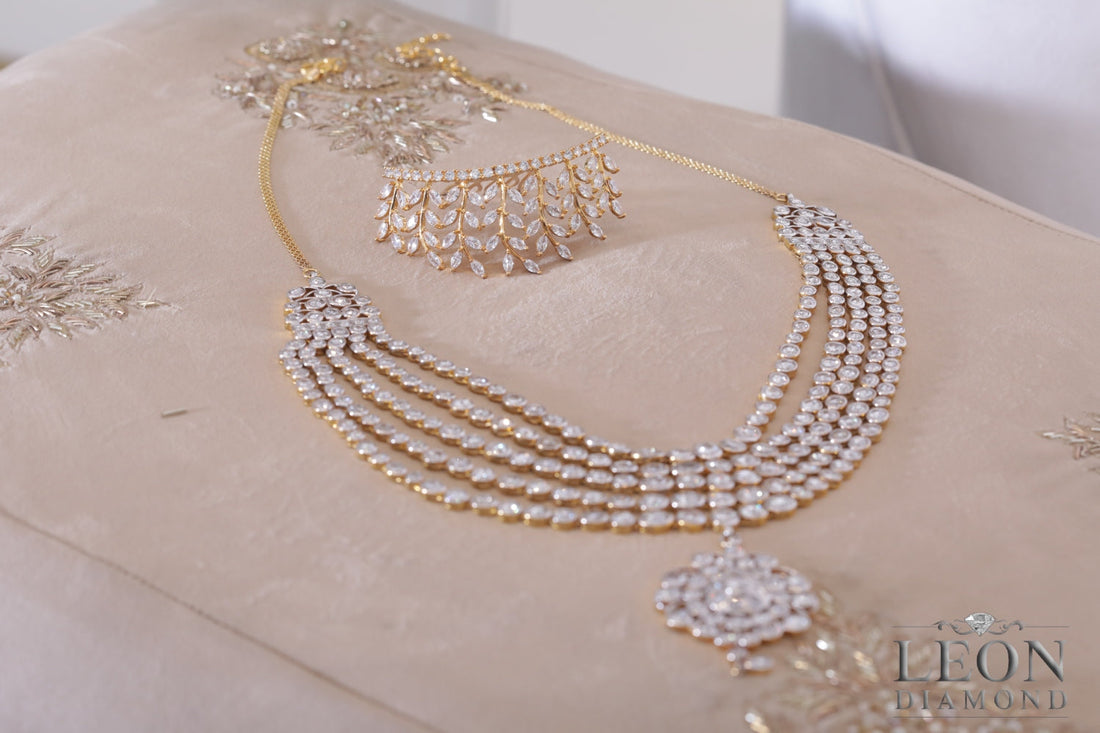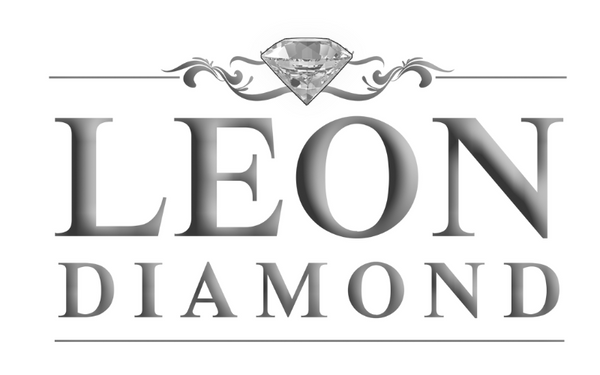
How Royal Families Shape Jewelry Trends Worldwide
Share
Royal families have long been arbiters of style, their opulent jewelry sparking trends that resonate across centuries and continents. From ancient Egyptian pharaohs adorned with gold to modern royals like Kate Middleton, who wears iconic sapphires, their choices reflect power, heritage, and innovation. These glittering treasures, often refashioned for contemporary tastes, blend tradition with modernity, influencing global fashion.
In 2025, royal jewelry remains a source of inspiration for designers and consumers, seamlessly blending timeless elegance with personal expression. This exploration delves into how royal families, through their wealth and influence, have shaped jewelry trends, leaving an enduring legacy of beauty and sophistication.
Ancient Royals: Divine Adornment and Symbolism
Royal jewelry in ancient civilizations was a potent symbol of divine authority and cultural identity, setting trends that echoed globally. In ancient Egypt, pharaohs like Cleopatra wore gold, linked to the sun god Ra, and lapis lazuli, symbolizing the heavens, in elaborate collars and amulets. Mesopotamian rulers showcased geometric patterns and animal motifs, reflecting cosmic order. Greek and Roman royals favored floral designs and cameos, blending mythology with opulence. These early trends, rooted in divine symbolism, laid the foundation for jewelry as a status marker.
For the Greeks, beauty was often a reflection of the divine, and their adornments echoed this belief, bridging mortal elegance with Olympian grace. A Roman's adornment spoke volumes; not of fleeting beauty, but of enduring power and the favor of the gods.
Just as their myths told tales of gods and heroes, so too did their jewels narrate stories of power, protection, and devotion, meticulously crafted from the earth's bounty.
"In Tyre's bright courts she donned her Tyrian robes,
with golden clasps and brooches richly set;
/ a cloak of purple, dyed in royal streams,
to match the gleam of rings that spoke her reign"
—Virgil's portrait of Dido's state jewelry (Aeneid 4.93–96, Dryden translation)
Medieval Monarchs: Faith and Feudal Elegance

During the Middle Ages, European royals used jewelry to express piety and power, influencing feudal aesthetics. The cross, a Christian symbol, was often adorned on gold and Diamond necklaces worn by kings and queens, reflecting the Church's dominance. Charlemagne's court popularized gem-encrusted crowns, blending Byzantine and Carolingian styles. These pieces, often depicting saints, inspired noblewomen's adornments, spreading religious motifs across Europe. By showcasing wealth and devotion, medieval royals established jewelry as a tool for forging political alliances and exerting cultural influence, trends that persisted in both ecclesiastical and secular designs.
In the Age of Faith, every royal gem was a sermon in stone, speaking of devotion and the divine right of kings. Amidst the tapestry of feudal power, royal jewelry was not merely a crown's glitter, but a holy declaration, binding earthly rule to heavenly grace. Here, Medieval English Poet, Geoffrey Chaucer, gives vivid imagery in the Tale of a Good Woman:
"Her threshold gemmed with pearls and shining gold,
Each pendant stone a tale of sovereign worth,
Reflecting heaven's favor on her brow.”
—Geoffrey Chaucer, The Legend of Good Women (Prologue, trans. Larry D. Benson)
Renaissance Royals: Classical Revival and Craftsmanship
The Renaissance saw royals like Elizabeth I of England revive classical aesthetics, driving jewelry trends toward elegance and artistry. Pearls, symbolizing purity, adorned her elaborate collars, while floral motifs echoed the designs of ancient Greece. Italian courts, under the Medici, championed intricate gemstone settings, showcasing craftsmanship. These royal preferences popularized delicate goldwork and enameling, influencing European elites. By commissioning bespoke pieces, Renaissance monarchs set a precedent for jewelry as a marker of intellectual and cultural sophistication, trends that shaped global design.
For Renaissance royalty, jewelry became a crafted testament to humanism, where each piece, exquisitely wrought, celebrated both divine inspiration and earthly artistic mastery. As the spirit of revival swept through Europe, the jewels of monarchs were wearable masterpieces, reflecting a profound appreciation for beauty, knowledge, and the pinnacle of human skill. The sophistication of the Age of Revival is perennial in Spenser's words:
"Few drops, more clear than Nectar, forth distilled,
That like pure Orient perles adown it trilled,"
—Edmund Spenser, The Faerie Queene (Book II)
Baroque and Rococo Eras: Opulence and Refinement
In the Baroque era, royals like Louis XIV of France favored dramatic jewelry, featuring large gemstones and intricate, swirling designs that reflected absolutist grandeur. The subsequent Rococo period, under Marie Antoinette, favored delicate, feminine pieces with floral motifs and pastel gems, epitomizing the elegance of the era. These royal tastes drove demand for ornate necklaces and earrings, influencing European aristocracy. By showcasing wealth and refinement, Baroque and Rococo royals cemented jewelry's role as a fashion statement, trends that inspired global luxury markets.
Through the opulence of Baroque and the whimsy of Rococo, royal adornments were declarations in brilliance, showcasing power, status, and the ever-evolving spirit of courtly fashion. From the sun king's commanding gleam to the queen's pastel whispers, royal jewelry became a grand theatrical flourish, adorning empires with both might and delicate beauty. Royal jewelry was the symphony of extravagance.
"When Heaven made man, to show the work divine,
Truth was His image stamp'd upon the coin:
And when a king is to a god refined,
On all he says and does, he stamps his mind:
This proves a soul without alloy and pure.
Kings, like their gold, should every touch endure."
—John Dryden, from his satirical madrigal "An Epilogue"
Victorian Era: Sentimentality and Fashion
Queen Victoria's reign marked a shift toward sentimental and nature-inspired jewelry, shaping 19th-century trends. Her love for cameos, hearts, and floral motifs reflected romanticism, while mourning jewelry with jet and onyx gained popularity after the death of Prince Albert—Victoria's sapphire and diamond pieces, like her coronation brooch, inspired halo ring designs. By wearing accessible styles, she democratized jewelry trends, influencing the fashion of the middle class. Her global influence, amplified by colonial networks, spread Victorian aesthetics, embedding sentimental designs in jewelry culture. From regal splendor to personal sorrow, Victoria's jewels were narratives in gems, telling tales of affection, loss, and an empire's evolving tastes.
20th Century: Modernity and Individuality
The 20th century saw royals adapt to modern aesthetics, blending tradition with innovation. Queen Mary of the UK, a prolific collector, refashioned heirlooms like the Diamond Fringe Tiara, setting a trend for convertible jewelry. Art Deco's geometric designs, which Princess Margaret adopted, reflected the royal family's embrace of contemporary styles. Mid-century minimalism influenced royals like Queen Elizabeth II, who wore regal yet straightforward aquamarine sets. These shifts, driven by royal visibility, popularized versatile, and fashion diamond jewelry, shaping global consumer trends.
Modern Royals: Refashioning Tradition
Today's royals, such as Kate Middleton and Meghan Markle, seamlessly blend heritage with modernity, influencing jewelry trends through strategic choices. Kate's sapphire halo ring, inherited from Princess Diana, sparked a global surge in colored gemstone engagement rings (Diamondere). Meghan's refashioned engagement ring, using Diana's diamonds, reflects a trend for personalized heirlooms. Queen Camilla's redesigned coronation crown, incorporating Cullinan diamonds, highlights sustainable repurposing. These choices, amplified by social media, inspire consumers to embrace bespoke, meaningful jewelry that merges royal legacy with contemporary style.
Asian Monarchies: Cultural Fusion and Innovation

Asian royal families, from Brunei to Thailand, shape jewelry trends by blending cultural heritage with modern design. Brunei's Princess Anisha wore a 132-carat diamond tiara by Flower Diamond, setting a trend for bespoke, culturally symbolic pieces. Thailand's Queen Sirikit's Fabergé swan brooches, adorned with briolette diamonds, popularized intricate, nature-inspired designs. Bhutan's Queen Jetsun Pema's Anna Hu poppy earrings, inspired by national flowers, reflect a trend for personalized, high-craft jewelry. These royals drive global demand for culturally resonant, innovative designs.
Economic and Cultural Impact: Global Influence
Royal jewelry has historically fueled economic growth through trade and craftsmanship. Ancient trade routes for lapis lazuli and diamonds, driven by royal demand, enriched empires. In the 19th century, Victoria's love for Indian gems sparked a surge in colonial trade, significantly influencing global markets. Today, royal commissions, like Brunei's Flower Diamond tiara, support luxury jewelers, driving innovation. Culturally, royal jewelry preserves heritage, with pieces like the Fife Tiara inspiring modern replicas, amplifying their global trendsetting power.
Legacy and Future: Enduring Royal Influence
The legacy of royal jewelry endures in 2025, inspiring designers and consumers with its blend of history and innovation. The Cartier Halo Tiara, worn by Kate Middleton, and Van Cleef & Arpels' Thai Royal Tiara continue to influence bridal trends. Social media amplifies royal influence, with TikTok creators like Amanda Matta highlighting pieces like the Connaught Tiara. LEON DIAMONDS honors this heritage, crafting pieces that echo royal elegance while embracing modern sustainability, ensuring royal-inspired trends remain vibrant in global fashion.
Frequently Asked Questions
How did ancient royals shape early jewelry trends?
Pharaohs and Mesopotamian rulers didn't just wear jewelry—they used it to express divine authority and power. Their lavish use of gold and gemstones set early standards for symbolic adornment that continue to resonate in today's designs.
What influence did Victorian royalty have on jewelry fashion?
Queen Victoria's style had a global impact. From romantic cameos to deeply emotional mourning jewelry, her choices popularized sentimental designs that reflected love, memory, and devotion.
How are today's royals setting new trends?
Modern royals, such as Kate Middleton and Meghan Markle, influence jewelry trends by blending tradition with fresh sensibilities. Whether it's refashioned heirlooms or ethically sourced pieces, their styles resonate with a new generation of buyers.
Which jewelry houses do royals often choose?
Renowned brands like Cartier, Van Cleef & Arpels, Boucheron, and Tiffany & Co. remain favorites among royalty. These maisons are famous for crafting timeless, bespoke pieces that seamlessly blend luxury with legacy.
How do Asian royals influence jewelry styles globally?
Royal families in countries like Thailand and Brunei bring cultural richness to contemporary design. Their jewelry often weaves together heritage symbols and modern elegance, inspiring a growing global appetite for custom creations.
What does the future hold for royal-inspired jewelry?
The future is personal and sustainable. With social media magnifying royal appearances and values shifting toward ethical luxury, expect a rise in customized, eco-conscious jewelry that still draws from regal tradition.
The Royal Legacy in Modern Jewelry
Royal families have shaped jewelry trends for millennia, from ancient Egypt's divine gold to Kate Middleton's iconic sapphire ring. Their choices, blending symbolism, craftsmanship, and innovation, have driven global fashion, influencing materials, designs, and cultural narratives. In 2025, royals continue to inspire through refashioned heirlooms and bespoke creations, amplified by social media. Leon Diamond celebrates this legacy, offering jewelry that captures the timeless allure of royal style, ensuring the crown of influence shines brightly in modern design.
